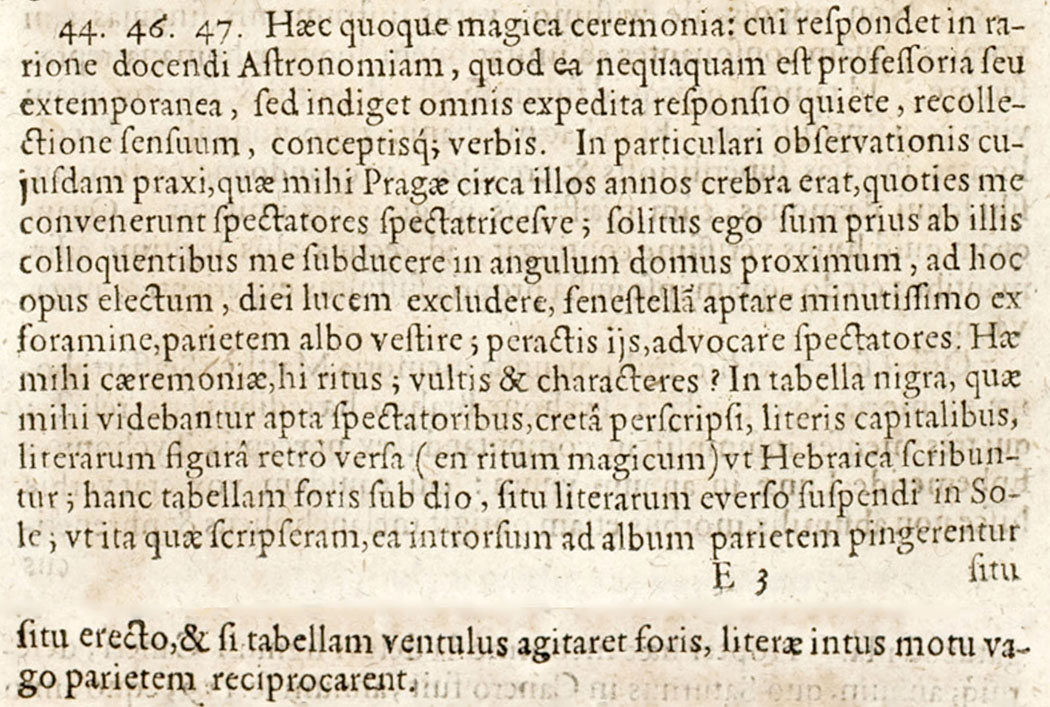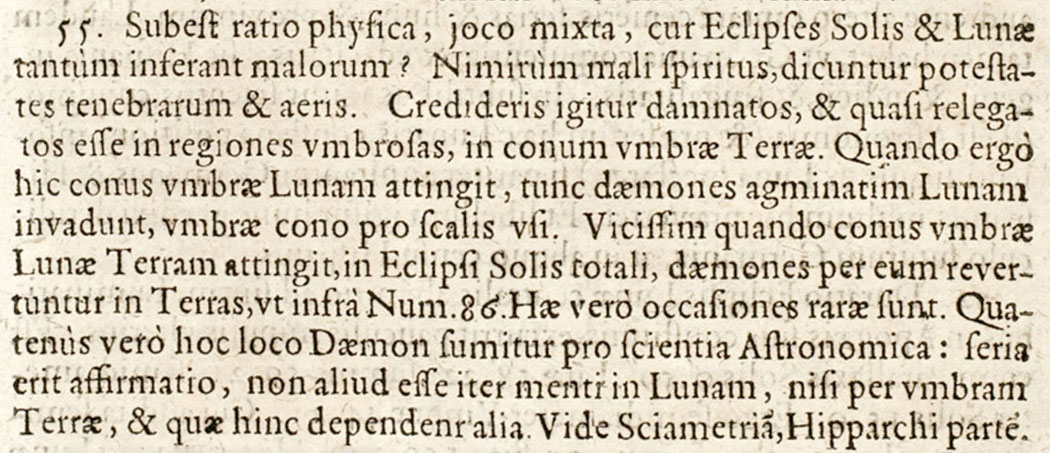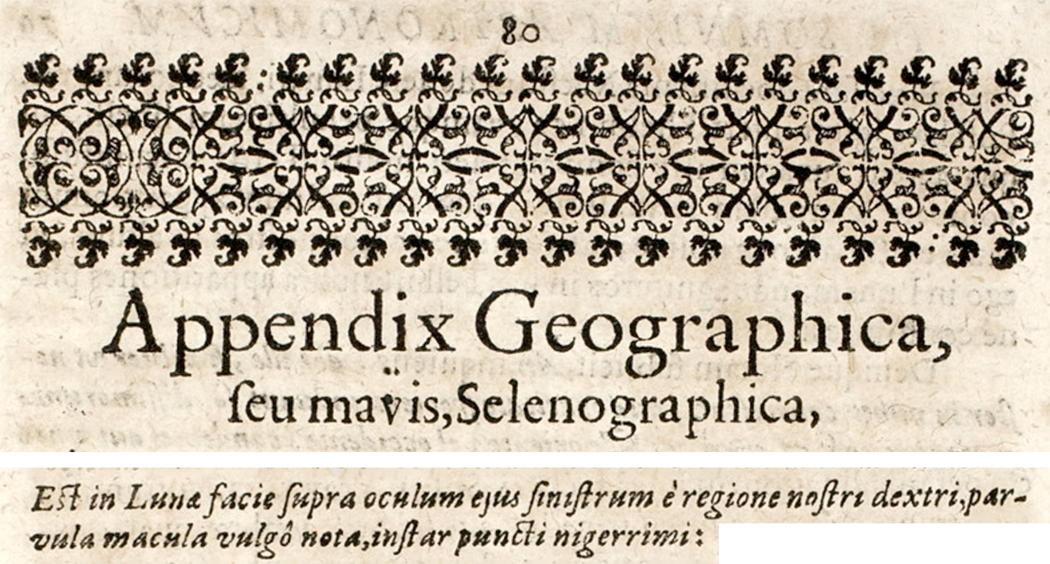Joannes Kepler
Somnium Seu Opus Posthumum De Astronomia Lunari, 1634
44
Telles étaient mes cérémonies, tels étaient mes rites.
Sur un écran noir, j'écrivais à la craie en majuscules
ce qui me paraissait convenir aux spectateurs:
je traçais les lettres de droites à gauche (voilà le rite magique!)
comme des lettres hébraïques.
Je suspendais cet écran au-dehors à la lumière du soleil,
les lettres à l'envers
si bien que ce que j'avais écrit se trouvait projeté
sur le mur blanc dans le bon sens.
Si un courant d'air agitait l'écran au dehors,
à l'intérieur les lettres allaient et venaient sur le mur
avec un mouvement sinueux.
This magical rite to which it corresponds is a basis for teaching astronomy,
because it is in no way spontaneous or extemporaneous;
yet, every disentangled answer stands in need of calmness,
recollection of the senses, and mental images.
I had often repeated this at Prague in those years in a special practice of certain observations, as often as spectators and observers gathered around me.
At first, I used to draw myself away from their conversation
by going to a nearby corner of the house,
to shut out the light of day, to make a small window with the smallest opening,
to cover the wall with a white cloth.
Once all this had been prepared, I used to gather spectators.
Were these my sacred ceremonies, or my religious custom, my signs?
I thought it fitting for spectators that I inscribe on a blackboard
-There lies the magical rite-the figure of capital letters turned backward,
as they are written in Hebrew.
I hung this tablet outside with the place of the letters turned to the Sun,
so that what I had written on it toward the inside
would be depicted on the white wall in an upright manner;
and if the wind were to move the tablet outside,
the letters inside would move backward and forward
in a wavy motion on the wall.
55Why the eclipses of the Sun and the Moon bring so much evil remains,
in jest, mixed in its physical cause.
Evil spirits are usually called powers of darkness and of the lower air.
You might believe that these spirits were damned,
as if they had been relegated to dark regions,
into the cone of the Earth's shadow.
When this shadow's cone touches the Moon,
then the Daemons invade the Moon in droves,
using the cone of the shadow as a ladder.
On the other hand, when the cone of the Moon's shadow touches the Earth
in the Sun's total eclipse,
the Daemons return to Earth through it, as is said in number 86.
Usually these occasions are rare.
In this place, the Daemon is mentioned instead of the science of astronomy.
For the mind, the affirmation will be in earnest that
there is no other way to the Moon, except through the Earth's shadow
and the other things which depend on it from here.
See the part on shadow measurement in my Hipparchus.
Il n'y a pas d'autre chemin vers la lune que l'ombre de la terre.
200By our sense of touch assisted by art, we can examine the heat of the Moon's light
(although it is scarcely the 15th part of the Volva's light).
If you receive the full Moon's rays in a parabolic or spherically concave mirror,
you will find it in the focus when the rays unite as a certain warm breath.
This happened to me at Linz while I was intent on other experiments with a mirror
when I was not considering the heat of light.
I began to see if anyone were breathing on my hand.
Si l'on reçoit les rayons de la pleine lune sur un miroir parabolique,
on sentira un souffle tiède à l'endroit du foyer.
α
©









